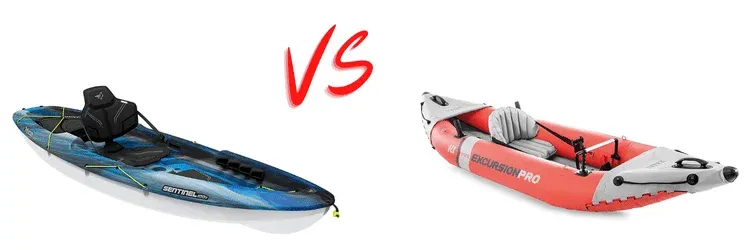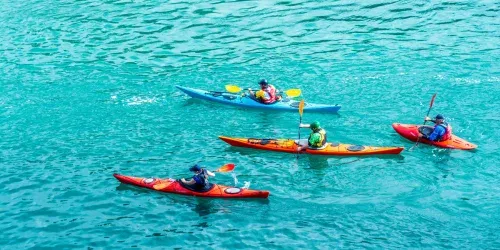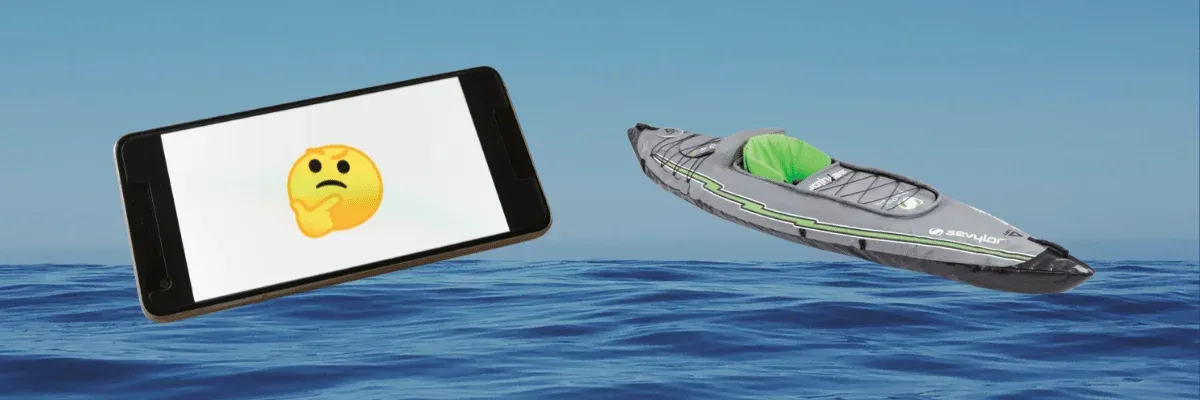Inflatable kayaks have surged in popularity among paddling enthusiasts, but the question remains: Are they truly seaworthy? This comprehensive guide will delve into the capabilities and features of inflatable kayaks, helping you understand their suitability for sea adventures.
Key Takeaways:
- Inflatable kayaks are designed with advanced materials and features that enhance their seaworthiness.
- Proper maintenance and understanding of weather conditions are crucial for safe sea kayaking.
- Inflatable kayaks offer versatility for various water environments, but it's essential to choose the right model for sea use.

Understanding Inflatable Kayak Materials
The durability and performance of an inflatable kayak largely depend on the materials used in its construction. Most inflatable kayaks are made from PVC, Nitrylon, or Hypalon, each offering different levels of resistance to punctures and UV damage. High-quality inflatables often feature drop stitch technology, which allows for a high-pressure floor, providing rigidity comparable to that of a hardshell kayak.
Seaworthiness of Modern Inflatable Kayaks
Modern inflatable kayaks have come a long way, with designs that cater to the demands of sea kayaking. They are equipped with multiple air chambers, tough materials, and self-bailing features that make them suitable for handling ocean waves and rough water. The best inflatable kayaks are designed to be stable boats, even in challenging sea conditions.
Inflatable Kayaks vs. Hardshell Kayaks
When comparing inflatable kayaks to their hardshell counterparts, it's important to consider the differences in performance. Inflatable kayaks are often wider, which provides stability in flat water and can be an advantage in rough waters. However, longer kayaks, whether inflatable or hardshell, tend to track better in a straight line, which is beneficial for ocean kayaking.

Safety Features for Sea Kayaking
Safety should be a top priority when kayaking in the sea. Quality inflatable kayaks come with several well-positioned holes that allow water to drain quickly, reducing the risk of capsizing. Additionally, features like welded seams, fully inflated air chambers, and securely locked valves contribute to the kayak's integrity and safety.
The Importance of Kayaking Safety Gear
No matter the type of kayak, safety gear is essential. This includes a life jacket, repair kit, extra paddle, leash, and a cell phone in a waterproof case. For inflatable kayaking, it's also wise to carry a manual pump to address any potential air loss while on the water.
Inflatable Kayaks for Fishing and Recreation
Fishing kayaks, such as those from Sea Eagle, are designed with higher capacity and stability in mind. These inflatable boats often have additional features like rod holders and storage spaces, making them excellent choices for anglers looking for a seaworthy inflatable kayak.
Handling Weather Conditions and Sea Use
Weather conditions play a significant role in the seaworthiness of inflatable kayaks. It's crucial to understand the forecast and be prepared for changes in wind and waves. Inflatable kayaks are good for sheltered bay use, but when venturing into open sea or coastline and outlying islands, it's important to have a kayak designed for those conditions.
The Role of Kayak Length and Width
The length and width of a kayak impact its performance in the sea. Longer kayaks tend to be faster and track better, while wider kayaks offer more stability, which can be beneficial in rough sea conditions. When choosing an inflatable sea kayak, consider the type of sea use you're planning.
Maneuverability in Shallow Water and Rapids
Inflatable kayaks are often preferred for shallow water and whitewater rapids due to their buoyancy and ability to absorb impacts from rocks. While these features are advantageous in rivers or lakes, they also contribute to the seaworthiness of inflatable kayaks by allowing them to ride over waves without puncturing easily.

The Extreme Sport of Ocean Kayaking
Ocean kayaking is an extreme sport that demands a kayak capable of handling rough water and strong currents. High-quality inflatables with a high-pressure floor and robust construction can be suitable for this type of adventure, provided they have the necessary safety features and are used by experienced kayakers.
Maintenance and Care for Inflatable Kayaks
Proper maintenance is key to ensuring the longevity and seaworthiness of an inflatable kayak. Regular checks for leaks, proper storage away from direct sunlight, and thorough cleaning after each use will help keep your inflatable kayak in top condition for sea use.
Choosing the Right Inflatable Kayak for Sea Conditions
Not all inflatable kayaks are created equal when it comes to sea conditions. It's essential to select a model with the following features: self-bailing capabilities, multiple air chambers, and a design that can handle the specific challenges of sea kayaking.

Summary
Inflatable kayaks have evolved to become versatile and seaworthy vessels suitable for various water environments. With advancements in materials and design, the best inflatable kayaks offer stability, durability, and safety features that make them viable options for sea kayaking. However, it's crucial to choose a model specifically designed for sea conditions and to equip yourself with the necessary safety gear. Proper maintenance and an understanding of weather patterns are also key to a safe and enjoyable sea kayaking experience.

FAQs
Can inflatable kayaks handle ocean waves?
Yes, many high-quality inflatable kayaks are designed with features such as multiple air chambers and tough materials that allow them to handle ocean waves. However, it's important to choose a kayak that is specifically designed for sea use and to be aware of your own skill level and the sea conditions.
Are inflatable kayaks as durable as hardshell kayaks?
Inflatable kayaks made from high-quality materials with advanced construction techniques can be just as durable as hardshell kayaks. They are designed to withstand punctures and UV damage, but like all kayaks, they require proper care and maintenance.
What safety gear should I have when using an inflatable kayak in the sea?
Essential safety gear includes a life jacket, repair kit, extra paddle, leash, and a cell phone in a waterproof case. Additionally, for inflatable kayaks, carrying a manual pump is advisable to address any potential air loss while on the water.









